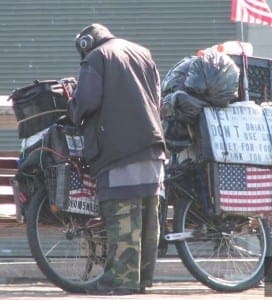 The State of Homelessness in America 2014 is the fourth in a series of reports that chart progress in ending homelessness in the United States. It examines trends in homelessness between 2012 and 2013, trends in populations at-risk of homelessness from 2011 to 2012, trends in assistance available to persons experiencing homelessness, and establishes a baseline from which to measure changes in the homeless assistance system enacted by the Homeless Emergency Assistance and Rapid Transition to Housing (HEARTH) Act.
The State of Homelessness in America 2014 is the fourth in a series of reports that chart progress in ending homelessness in the United States. It examines trends in homelessness between 2012 and 2013, trends in populations at-risk of homelessness from 2011 to 2012, trends in assistance available to persons experiencing homelessness, and establishes a baseline from which to measure changes in the homeless assistance system enacted by the Homeless Emergency Assistance and Rapid Transition to Housing (HEARTH) Act.
Report Contents
This report is intended to be a desktop reference for policymakers, journalists, and community and state leaders. Chapter 1 presents national and state trends in homeless populations. Chapter 2 examines trends in populations at-risk of homelessness. Chapter 3 analyzes beds available to homeless persons and usage of those resources, and establishes a baseline from which to examine shifts from transitional housing to rapid re-housing and permanent supportive housing. This report uses the most recently available data from a variety of sources: the U.S. Department of Housing and Urban Development (HUD), U.S. Census Bureau, and the U.S. Bureau of Labor Statistics.
From 2012 to 2013, a period of continued slow recovery from the Great Recession, overall homelessness decreased by 3.7 percent and homelessness decreased among every major subpopulation—families (7 percent), chronically homeless individuals (7.3 percent), and veterans (7.3 percent). But nationwide trends do not tell the full story:
- 31 states saw a decrease in homelessness, while 20 states saw increases in overall homelessness.
- The national rate of homelessness fell to 19 homeless persons per 10 ,000 people in the general population, but the rate in individual states ranged from 106 in Washington, DC to 8 in Mississippi.
- The rate of veteran homelessness fell to 27 homeless veterans per 10,000 veterans in the general population, but the rate in individual states ranged from 28 in Wyoming to 156 in Washington, DC.
Tags: Homelessness, Poverty Analysis, USA


